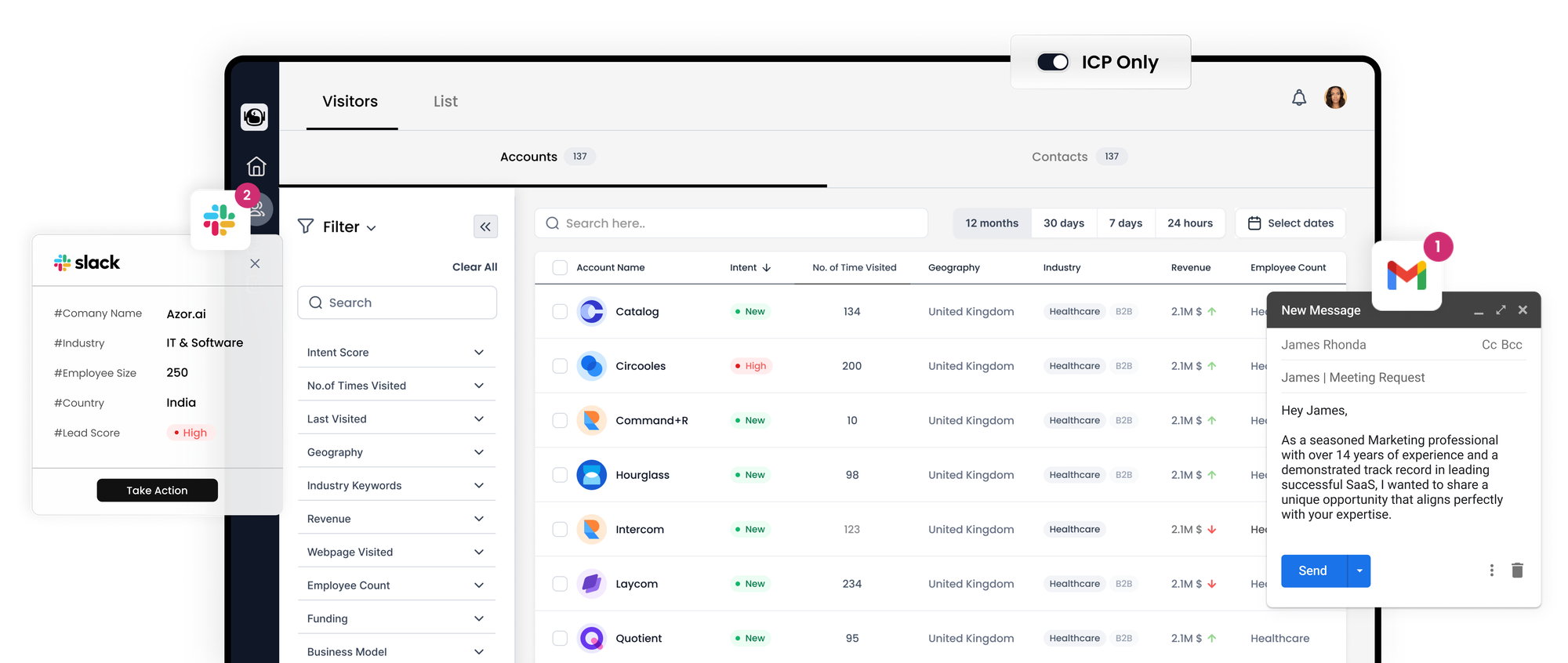Exploring the Essentials of Website Visitor Tracking

As a website owner, you are likely well-acquainted with the utility of web analytics tools. These tools provide invaluable insights into website visits and overall site performance. However, to gain a more comprehensive understanding of user behavior, it is essential to delve into the intricacies of how individual visitors interact with your site. This is precisely where the concept of website visitor tracking comes into play.

What is Website Visitor Tracking?
Website visitor tracking involves the systematic recording of visitor interactions with your website, followed by the visualization of this behavior in a meaningful manner. This process enables website owners to gain deeper insights into the individual user's journey through the site, identify potential bottlenecks, and subsequently optimize user experiences based on these revelations.
The Mechanics of Website Visitor Tracking
Website visitor tracking is typically facilitated through a specialized script that is installed on your website. This script diligently logs significant user actions such as clicks, scrolls, mouse movements, and more. The recorded user behavior can then be presented in various formats, including aggregated overviews that amalgamate the activities of numerous visitors or session recordings that allow site owners to view the actions of individual visitors.
Diverse Approaches to Website Visitor Tracking
To attain a comprehensive understanding of visitor behavior, a range of distinct tracking methods and visualizations are employed:
1. Behavior Maps:
Behavior maps offer a consolidated view of visitor interactions on a single page of your website. These maps aim to visually represent user behavior on the page by overlaying it with color-coded indicators that highlight areas of heightened user engagement. Typically, behavior maps take the form of heat maps, click maps, and scroll maps, revealing where users position their mouse, where they click, and how far they scroll down the page, respectively. Areas of increased activity are typically denoted in red, while less active areas are depicted in blue. Behavior maps provide a highly effective and intuitive means of obtaining insights at the page level for numerous users in a single static snapshot.
2. User Recordings:
User recordings present the polar opposite, offering a comprehensive view of an entire visit by a single user. These recordings capture every action taken by a user from the moment they enter the website to their eventual departure. Users can essentially "relive" their visit by watching a video recording of their interactions, with options to adjust playback speed and more. User recordings provide an intimate understanding of user behavior, allowing site owners to witness user frustrations, navigation challenges, and issues such as unsuccessful attempts to submit forms. While not as effective for assessing overall site performance, user recordings are a potent tool for identifying significant leaks in the conversion funnel and garnering organizational support for remedial actions.
3. User Journey Mapping:
User journey mapping serves as a hybrid approach, bridging the gap between behavior maps and user recordings. It delineates the pathways visitors take between two distinct pages on your website, marking all possible routes between these pages. This mapping is complemented by quantitative data that sheds light on the number of visitors at each intermediate stage and the attrition rates at various junctures. User journey mapping aids in evaluating existing conversion funnels, pinpointing critical bottlenecks, and devising more effective customer journeys. In practice, website owners often employ a combination of visitor tracking methods, leveraging the strengths of each to diagnose issues, identify areas for improvement, and ultimately enhance the user experience.
In summary, website visitor tracking is a multifaceted discipline that empowers website owners to gain profound insights into user behavior. By employing various tracking techniques and visualizations, businesses can uncover opportunities for optimization, fine-tune their websites, and provide enhanced experiences for their online visitors.
Exploring the Advantages of Implementing Website Visitor Tracking
Integrating visitor tracking into your website's analytics toolkit can provide a multitude of benefits, complementing the insights offered by other web analytics tools. In many ways, visitor tracking stands out by offering actionable insights that delve into the specifics of addressing page-level issues and enhancing user journeys, akin to conducting direct interviews with site visitors without the need for actual interaction.
Here are some of the key advantages of incorporating website visitor tracking:
1. Deeper User Insights:
Visitor tracking enables a granular examination of individual visitors or specific pages, facilitating a comprehensive understanding of how users interact with your site. This level of scrutiny allows you to segment users based on their intended objectives, leading to the development of tailored journeys for distinct audience segments.
2. Enhanced Conversion Rates:
Visitor tracking empowers you to identify and rectify irrelevant elements that may divert users from their intended goals. By identifying hotspots on a page, you can strategically position key Call-to-Action (CTA) buttons in more accessible locations. Implementing improvements based on visitor tracking data results in a smoother user experience, increasing the likelihood that users reach their desired destinations and ultimately boosting conversion rates.
3. Optimized Content Strategy:
Tracking visitor behavior plays a pivotal role in evaluating the effectiveness of your content strategy. You can assess whether users read through lengthy product pages and determine if they navigate seamlessly from one piece of content to another as intended. Additionally, visitor tracking helps in identifying content gaps and underperforming elements. For instance, it can unveil that a valuable "How to" video is hidden at the bottom of a page, rarely seen by visitors due to limited scrolling. Armed with this insight, you can redesign the page to make essential support resources easily accessible, presenting visitors with the information they seek upfront.
In essence, website visitor tracking empowers you to optimize user experiences, streamline conversion paths, and fine-tune your content strategy by providing invaluable insights into user behavior. This approach enhances your ability to cater to diverse user needs, ultimately contributing to the success and effectiveness of your online presence.
